Programmatic SEO pages have become as a game-changer, revolutionizing how businesses approach search engine optimization. This innovative strategy leverages algorithmic tools and automated processes to create vast numbers of web pages, each optimized for highly specific search queries.
At the heart of this approach is the creation of content that’s not just abundant, but also relevant, engaging and search engine friendly.
From understanding the importance of keyword research in targeting niche markets to structuring content to maximize SEO potential, this post will walk you through how to create content that resonates with both search engines and human readers alike.
Single Grain enables us to increase our impact without increasing our headcount
Key Components of Programmatic SEO Pages
Understanding the essential elements that make up the backbone of programmatic SEO pages is crucial for harnessing the full potential of this strategy.
The key components of pSEO pages are:
Content Template
An SEO landing page template serves as a blueprint for the automated generation of web pages at scale. It defines each page’s structure, content elements and formatting guidelines to ensure consistency and efficiency in content creation.
Unlike traditional SEO, where landing pages are individually crafted, programmatic SEO relies on templates to dynamically populate data from a connected database into predefined placeholders within the template. These templates include dynamic variables, SEO meta tags, internal linking structures, and user experience considerations.
Content Database
A content database is a structured repository of information that serves as the foundational data source for the automated generation of SEO optimized web pages. Comprising organized and relevant data such as product details, geographic information and other specific parameters, the content database acts as the fuel for dynamically populating content templates.
These templates, in turn, use dynamic variables that act as placeholders for the database’s data. The content database ensures scalability and automation, facilitating the streamlined generation of SEO landing pages at scale.
Content Quality and Relevance
Content quality and relevance are paramount for achieving successful outcomes in programmatic SEO strategy. While automation is a key feature, the generated content must maintain high standards to meet user expectations and search engine criteria. High-quality content encompasses accurate and valuable information, proper grammar and engaging writing styles.
Similarly, relevance involves aligning the content with user intent so that the dynamically generated pages address specific search queries and provide meaningful insights:

Balancing automation and human oversight is necessary to avoid pitfalls such as creating spammy or low-quality content.
User Experience (UX)
A good website UX ensures that dynamically created landing pages are optimized for search engines and deliver a seamless and valuable experience for users. This involves maintaining a clear and intuitive site structure, incorporating relevant internal linking and presenting information in a user-friendly format.
Mobile Optimization
Search engines like Google prefer to use the mobile version of a webpage when deciding how to rank it. If a website isn’t set up well for mobile devices, it might not appear as much in organic search results, which means it could miss reaching many people who use phones and tablets. Hence, you should make sure a website’s content looks good and can be browsed easily on smaller screens.
Internal Linking Structure
A well-structured internal linking system connects relevant pages within the website:
Relevant internal links aid in user navigation and help Google understand web page hierarchies and relationships. The SEO anchor text used in internal links is another important factor. Descriptive and relevant anchor text helps users and search engines add clarity about the linked page’s content. This contributes to the overall informativeness of the website’s structure.
Page Titles and Meta Descriptions
Well-written and relevant page titles and meta descriptions serve as concise yet influential snapshots of a page’s content, directly affecting its ranking on search engine results pages (SERPs):
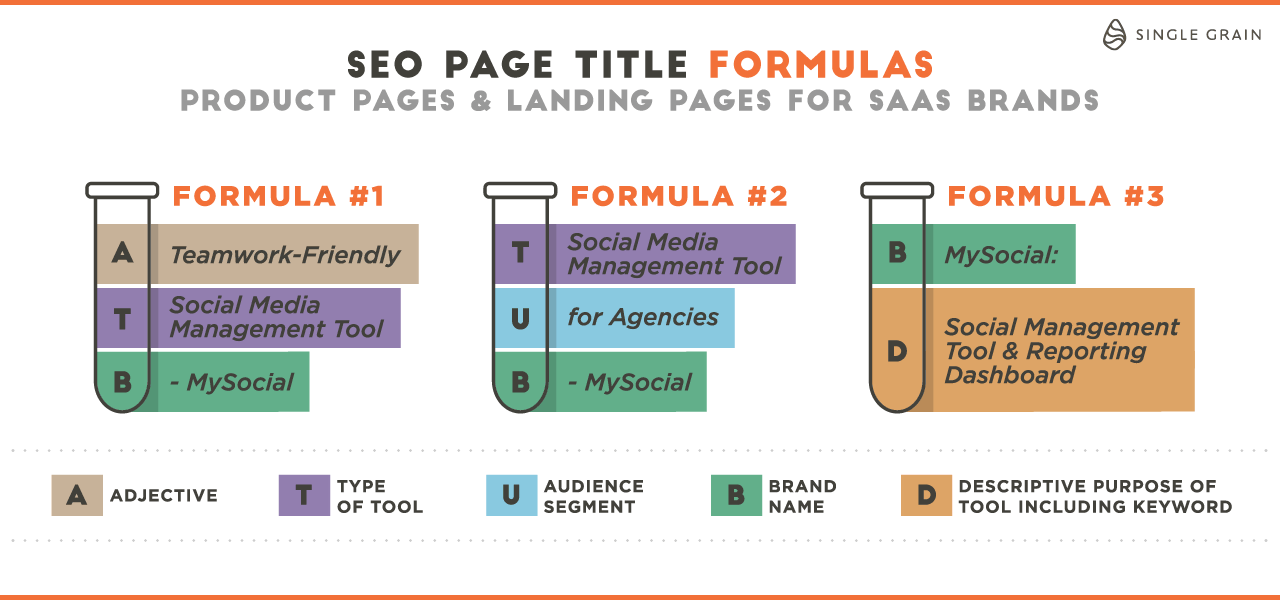
A compelling page title concisely represents the page’s subject matter and holds significant weight in search algorithms, contributing to the page’s relevance for specific queries. Well-crafted meta descriptions improve the click-through rate and act as persuasive marketing copy, enticing users to choose a specific page over others in the search results.
URL Structure
A well-organized URL structure enhances the overall user experience and optimization of the search engine. When URLs are clean, descriptive and incorporate relevant keywords, they concisely represent the content within a webpage.
This not only aids users in understanding the context of a page, but also contributes to search engines’ comprehension of the content, potentially improving the site’s visibility in search results.
Semantic SEO Integration
Natural language and contextually relevant terms signal the depth and breadth of your content’s relevance to search engines. Use semantic markup, like header tags and semantic HTML, to provide additional context and structure, helping search engines grasp the semantic meaning of the written content.
Semantic SEO enhances the accuracy of search engine results and aligns well with the evolving algorithms that prioritize contextual understanding, which contribute to improved rankings and a much better user experience.
Strategies for Effective Content Creation
Effective content automation is a cornerstone of successful programmatic SEO strategy, therefore demanding a strategic and dynamic approach.
In this section, I’ll show you how to begin your programmatic SEO journey by selecting target keywords and using primary and secondary modifiers to create pages.
Keyword Research for Programmatic Pages
Before you begin your keyword research for programmatic SEO, it is necessary to understand the difference between traditional vs. programmatic SEO keyword research.
Traditional Keyword Research Vs. Programmatic SEO Keyword Research
- Traditional keyword research primarily aims to identify high-search-volume, low-competition keywords, focusing on broad terms often consisting of one or two words. The goal is to attract a large audience to the website by optimizing for terms with widespread popularity.
- Programmatic SEO keyword research, in contrast, focuses on low-search-volume, low-competition keywords, specifically targeting long-tail keywords with three or more words. The emphasis is on understanding and aligning with user intent to cater to specific needs and provide highly relevant content.
Programmatic SEO aims to rank for many keyword variations, leveraging cumulative traffic from niche queries rather than focusing on a single high-volume keyword.
Head Terms and Modifiers in Programmatic SEO
Head terms are broad and general keywords typically consisting of one or two words. They have a high search volume but are often more competitive to rank for.
For example, if you’re in the pet industry, “Pet food” or “Pet nutrition” are considered head terms. These terms capture a wide audience searching for general information.
Modifiers are words added to the head terms to make them more specific or detailed. These additional words provide context, narrowing the search intent and creating long-tail keywords:
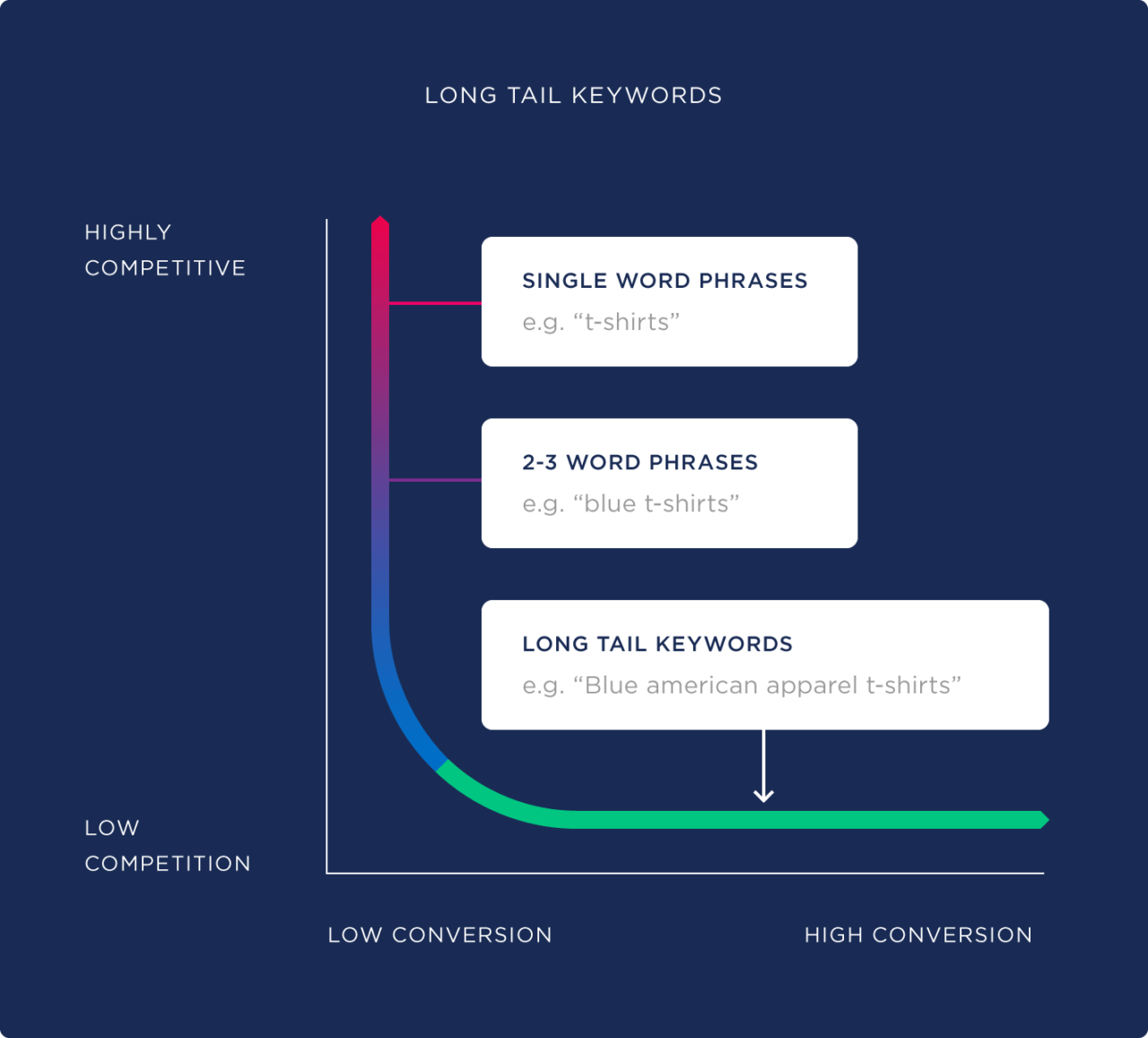
For example, using modifiers, the head term “CRM software” can be modified to create long-tail keywords like “CRM software for small businesses” or “cloud-based CRM software for sales teams.”
Head terms contribute to broader visibility, capturing a larger audience. Modifiers, on the other hand, enhance relevance by tailoring the content to specific user queries.
The combination of head terms and modifiers results in long-tail keywords. These longer, more specific phrases often have lower competition and can cater to niche searches.
Finding the Best Keywords for Programmatic SEO
Now that you have understood the basic terminology for programmatic SEO keyword research, let’s begin the step-by-step process of finding specific keywords based on your niche.
Step 1: Prepare a List of Head Terms
First things first, get your head terms ready. You should have at least 20 head terms for maximum impact.
For instance, if you own a pet blog and are looking to scale your organic traffic via programmatic SEO, here are some head terms to target:
- Pet Care
- Pet Food
- Dog Training
- Pet Health
- Puppy Care
- Dog Breeds
Step 2: Add Keyword Modifiers
Now, add your keyword modifiers to make them niche-specific.
Here are some keyword modifiers for our list of keywords:

Once you have added all the modifiers to your head terms, it’s time to generate your full list of keyword ideas for creating city specific landing pages.
Step 3: Enter Your Keywords in a Keyword Research Tool
Now, enter your target keyword with modifiers one by one in any keyword research tool of your choice. You can use these or any other tools:
- Semrush
- UberSuggest
- WordStream
- Ahrefs
- SERanking
I am using SEranking for this purpose.
Next, I enter the keyword “best pet food for” in the tool:

And I get these ideas:



As you can see, the competition and search volume are both lower.
Step 4: Filter and Download Your List
Carefully review the list of keywords and select the ones that make sense.
Once done, click on the export option to download your filtered list of keywords:

Here are some keyword research tips to follow for programmatic SEO keyword research:
- Find a good keyword that has a head term capable of generating at least 50-100 modifiers to support the creation of diverse landing pages for topical authority and domain boost.
- Pick keywords with less competition, as competitive keywords are hard to win.
- Identify keywords between 10-50 monthly searches; avoid extremes of high or low search volumes for optimal performance.
Semantic Keyword Integration
In programmatic SEO, semantic keyword integration is a crucial strategy for optimizing content and enhancing search engine visibility. It involves incorporating semantically related keywords and phrases that are contextually relevant to the main topic.
By understanding the user’s intent and including synonyms, variations and closely related terms, programmatic SEO helps in creating content that aligns more comprehensively with what users are searching for.
For instance, for the keyword “best pet food for labradors,” some of the possible semantic variations that you should use in your content are:
- Top-rated Labrador dog food
- High-quality pet nutrition for Labradors
- Labrador-specific dog meals
- Best diet for Labrador Retrievers
- Premium pet food tailored for Labradors
- Nutrient-rich Labrador feeding options
- Labrador-friendly pet nutrition
- Labrador-approved dog food brands
- Specialized meals for Labrador health
- Optimal feeding for Labrador Retrievers
Semantic SEO improves the search engine’s understanding of the content and caters to a broader range of user queries, ultimately contributing to a more robust and effective programmatic SEO strategy.
Structuring Content for Programmatic SEO
To structure content for programmatic SEO effectively:
✅ Start by establishing a clear hierarchy with well-defined headings and subheadings to guide users and search engines through the material.
✅ Implement internal linking to connect relevant pages within your website, aiding navigation and enhancing search engines’ understanding of content relationships.
✅ Optimize header tags, using them judiciously to structure content logically and improve readability.
✅ Incorporate multimedia elements like images and videos, making sure that they are relevant and optimized for user experience and SEO.
✅ Place keywords strategically throughout your content, focusing on natural integration rather than overloading with keywords.
✅ Make sure your content is mobile-responsive, offering a seamless experience across various devices.
By following these actionable steps, you can create content that engages users and aligns effectively with programmatic SEO principles, enhancing your website’s visibility in search results.
Optimizing Content for Programmatic SEO Pages
By implementing these on-page optimization strategies for programmatic SEO, you can efficiently scale your marketing efforts, generate increased website traffic, build topical authority, and acquire high-quality leads.
On-Page SEO Techniques
On-page SEO consists of changes done on a website to help it rank higher for a set of target keywords. It encompasses various elements, including optimizing content, meta tags, and HTML source code. Key on-page SEO techniques include:
- Keyword Optimization: Strategically placing relevant keywords in titles, headings and throughout the content. For example, if you target “pet food for labrador,” you should sprinkle the keyword and its semantic variations throughout the page.
- Content Quality: Providing high-quality, valuable, relevant content that meets user intent. Create unique content that provides new information on the same topic that no other website offers. Also, present the information in a unique and user-friendly manner.
- URL Structure: Creating relevant and easy-to-understand URLs helps search engines and users understand the content of the landing pages. For example, if you target the keyword “dog breeds for kids,” then you should create a URL structure that uses the same keywords, like “dog-breeds-for-kids.”
- Internal Linking: Connecting related pages within the website for improved navigation and SEO. Internal links contribute to the distribution of link equity across the website. Pages with higher authority can pass some of that authority to linked pages, enhancing their visibility and potential ranking in search results.
- Image Optimization: Faster loading and easily understandable images improve web page performance and user experience. To optimize images effectively, use compressing tools like Squoosh or ShortPixel to reduce file sizes without sacrificing quality. Use modern file formats like WebP for improved compression. Implement responsive images using the “srcset” attribute (an HTML attribute specifically for the
<img>tag) to deliver different sizes based on the user’s device, ensuring faster loading times.
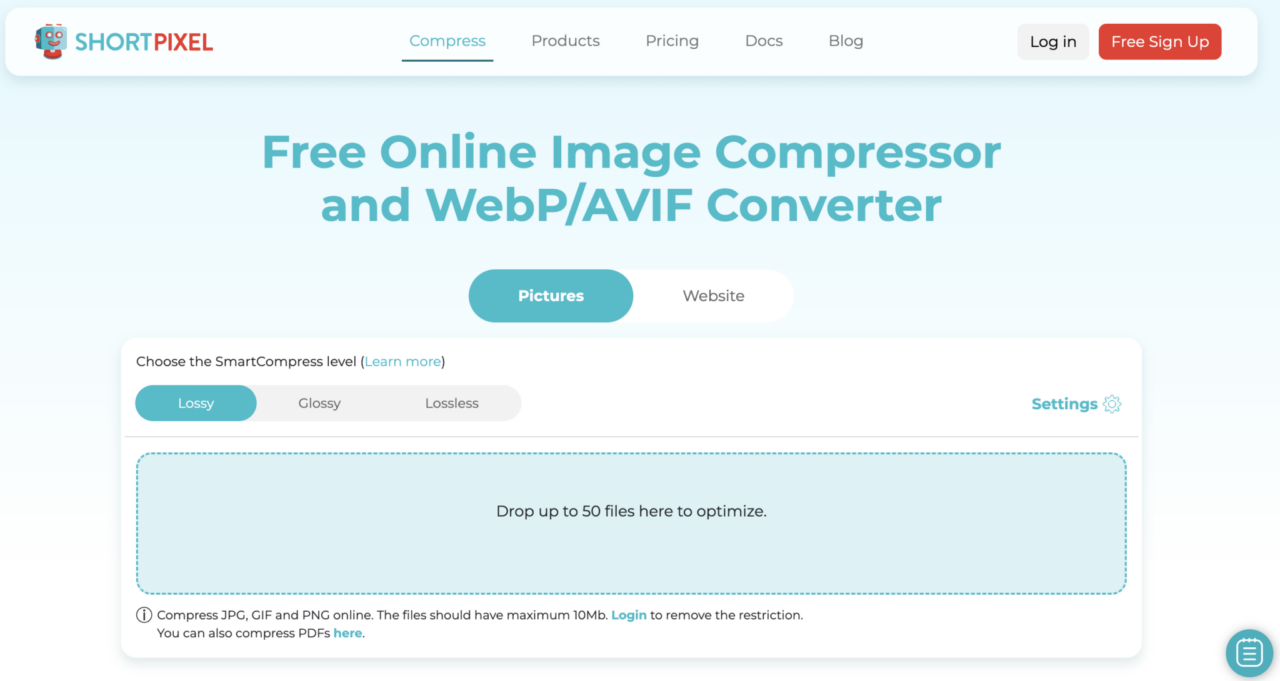
- Dynamic Sitemaps: Creating dynamic sitemaps is like creating a system where your sitemap is automatically generated and updated. This is important for programmatic SEO as web pages are created on scale, and you need a system where new pages are added to the sitemap automatically. For example, if your website is built on a CMS like WordPress, Joomla or Drupal, you can use plugins like Yoast for WordPress or OSMap for Joomla to automatically generate and update sitemaps:
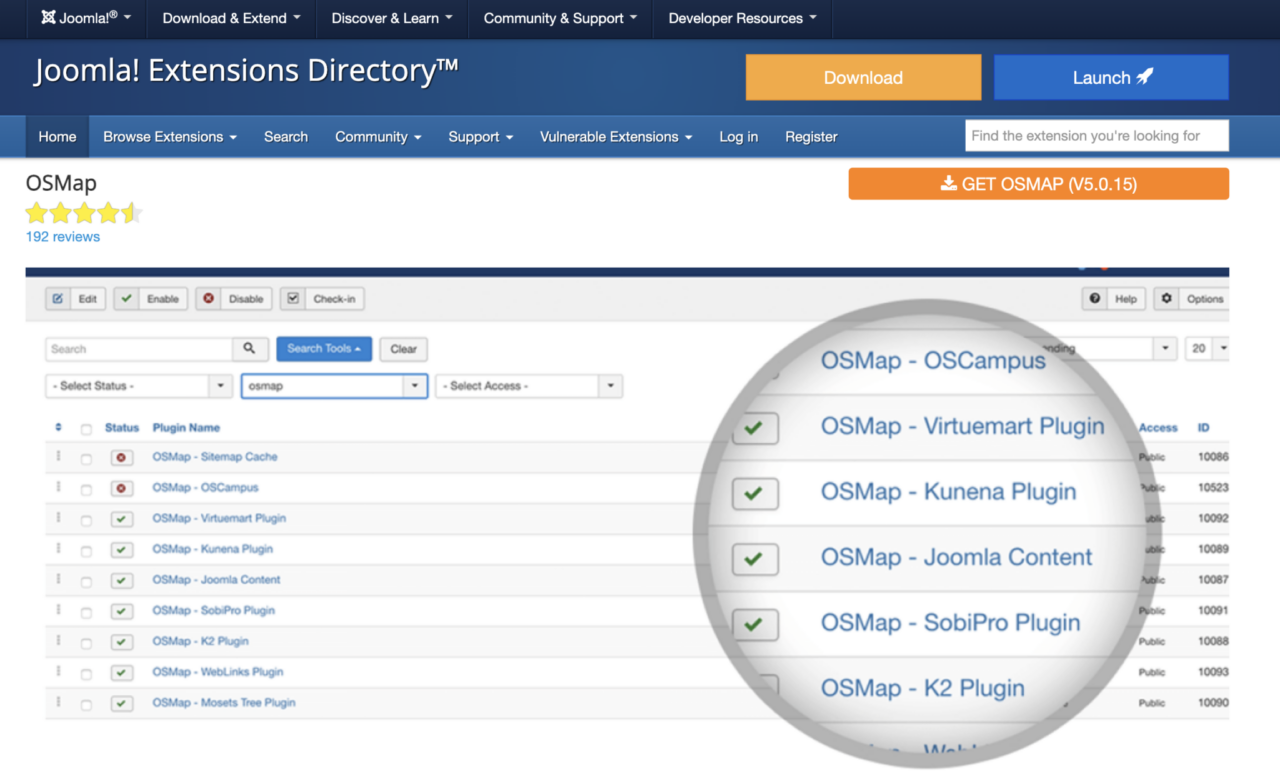
Importance of Meta Tags and Descriptions
Meta tags improve SEO and help search engines understand your website better. Here are the top three meta tags you should use to build landing pages:
- Title Tags: These are displayed as the main headline in search results. Well-crafted title tags influence click-through rates and provide search engines with a clear understanding of the page’s topic. For example, if you target the “Dog Food for Labrador” page, you should keep a title like “Best Dog Food for Labradors: 2024 Review.”
- Meta Descriptions: These summaries beneath the title in search results provide users with additional context. An SEO-friendly meta description can entice users to click on your link, increasing the likelihood of capturing organic traffic. Taking the above example, a good meta description is “Explore our range of premium dog food for labradors. Specially crafted for Labradors, our nutritious range is tasty and healthy.”
- Canonical Tag: The canonical tag specifies to search engines which version of a page is the favorite when there are different web addresses with similar content. It helps prevent duplicate content issues. For example, you can specify the canonical tag for the page as “<link rel=”canonical” href=”https://mypetsite.com/dog-food-for-labradors”>.
The Role of Schema Markup in Enhancing Visibility
Schema markup is like a special language added to the code of a webpage. It helps search engines understand and gather more detailed information about what’s on the page.
- Rich Snippets: Schema markup enables the display of rich snippets in search results, offering users more information before they click:

- Enhanced Understanding: Search engines use schema markup to understand the context of content better, improving search results’ accuracy.
- Local SEO: For businesses, schema markup can provide details like business hours, location and customer reviews, enhancing local search visibility.
- Featured Snippets: Certain types of schema markup, like recipes, FAQs, and How-to schemas, can contribute to generating featured snippets, positioning your content at the top of search results for specific queries.
If you need more info about this, check out Google’s guide to Schema markup that explains the type of code you need and how to implement it on your site.
Leveraging AI and Automation in Programmatic SEO
AI algorithms and automation tools help to automate tasks, allowing you to scale your SEO efforts more efficiently. You can use several AI-powered tools to complete time-consuming and redundant SEO tasks to ensure that your programmatic SEO strategy performs according to the needs of your target audience.
Here are some tips to leverage automation in programmatic SEO:
- Dynamic Content Generation For Content Templates: Use AI content writing tools to create content at scale. Tools like OpenAI’s GPT-3 and ShortlyAI automatically create variations of your content, making it suitable for different audience segments and improving overall SEO performance.
- Automated SEO Audits: Implement tools like Screaming Frog SEO spider and Semrush site audit to conduct automated SEO audits. These tools can regularly analyze your website for SEO best practices, identify areas for improvement, and provide actionable insights.
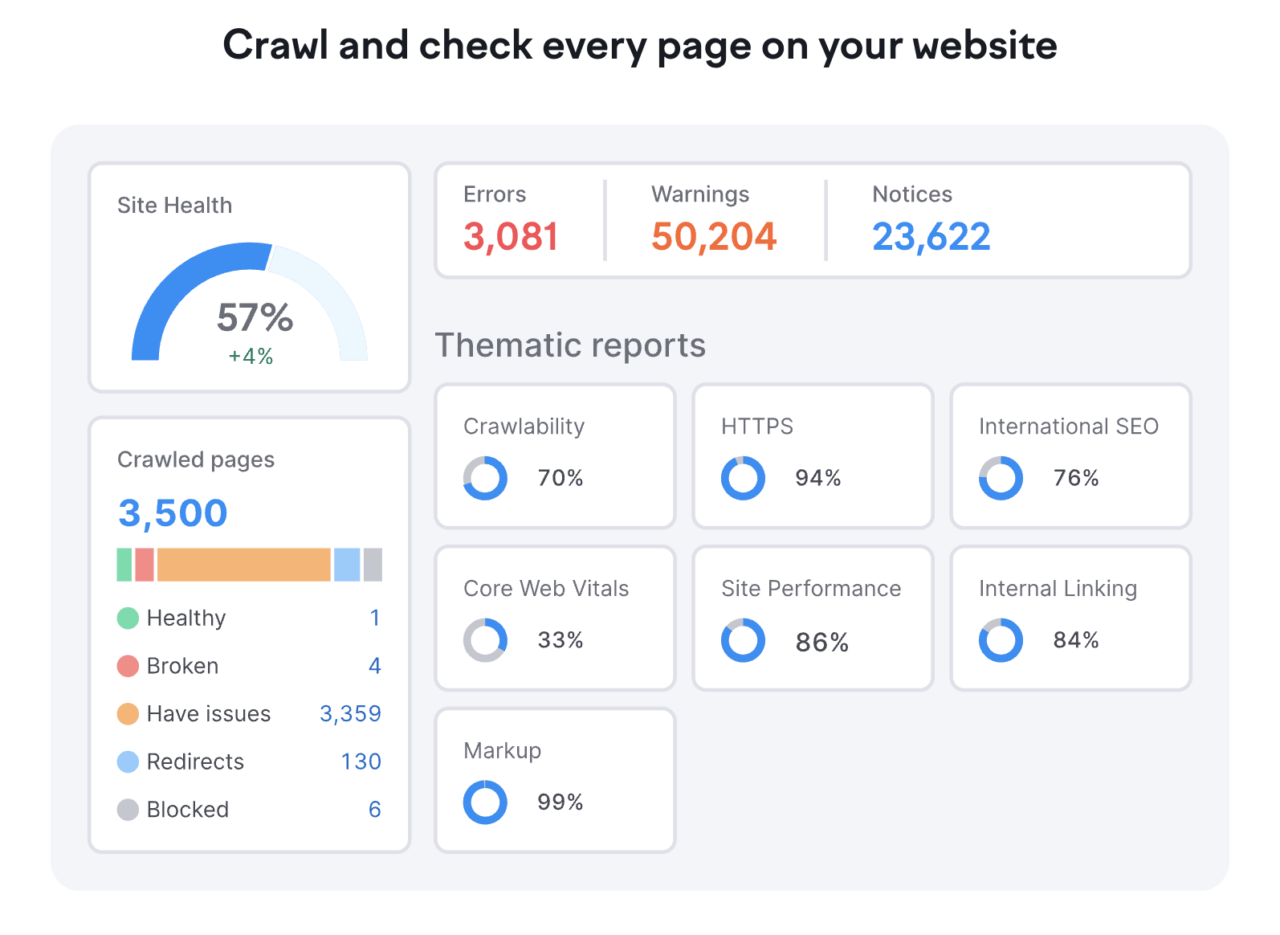
- Dynamic XML Sitemaps: Set up dynamic XML sitemaps like those offered by Yoast SEO to automatically update as new content is added or removed. This ensures that search engines are promptly informed of changes in your site structure.
- AI-Powered Content Optimization: Leverage AI-driven tools for content optimization like Clearscope and MarketMuse to analyze user behavior, identify content gaps, and provide recommendations for improving the relevance and engagement of your pages:
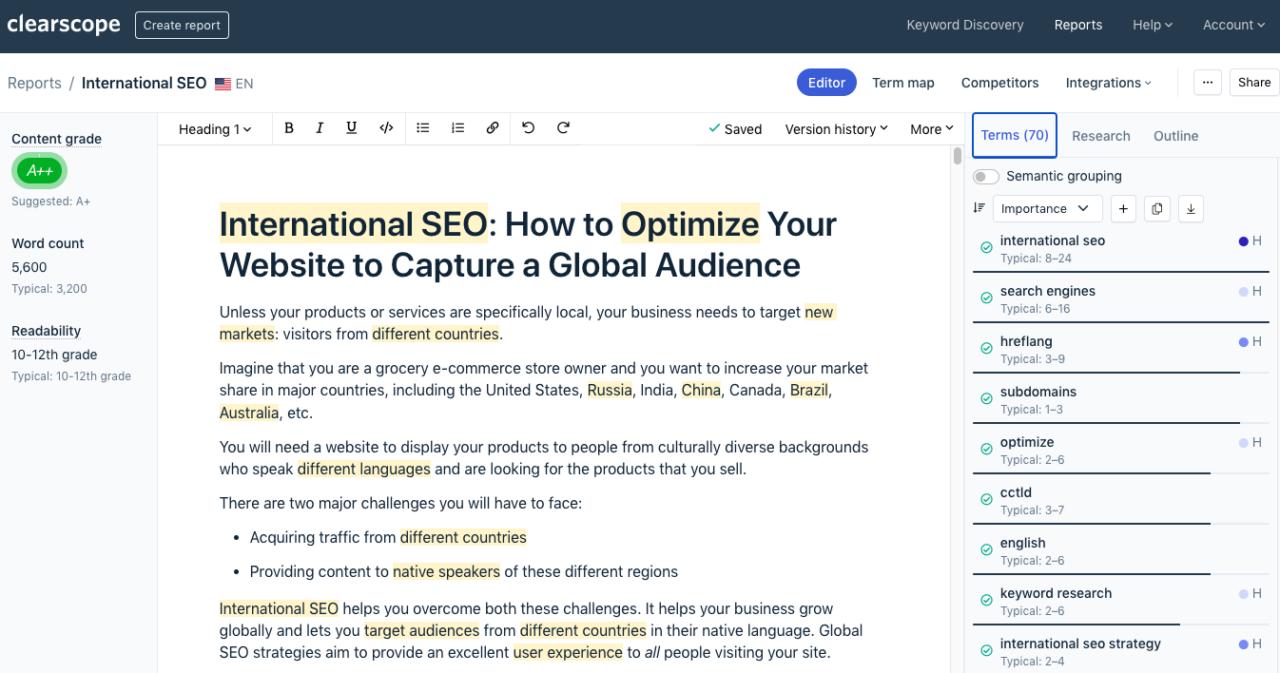
- Automated Social Media Posting: Integrate your programmatic SEO efforts with social media automation tools like Buffer and Hootsuite. These software will automatically share newly published content on social media platforms to increase visibility and drive traffic.
- Automated Reporting: Use reporting tools like Google Data Studio to automate the generation of SEO performance reports. Scheduled reports can provide insights into key metrics, allowing you to track progress over time.
- Automated Monitoring and Alerts: Set up automated monitoring tools like Google Search Console to track website performance, crawl errors and other SEO-related issues:
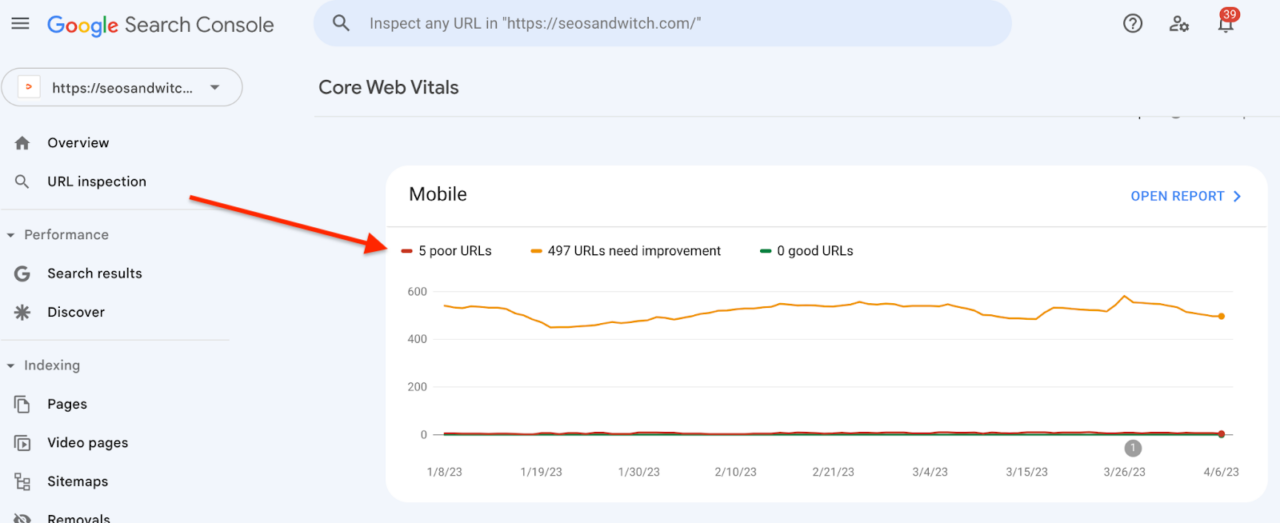
- Dynamic Content Personalization: Explore automation for dynamic content personalization. Tailor content based on user behavior, preferences and demographics to enhance the user experience and improve SEO.
Case Study: Successful Integration of AI in Programmatic SEO
I will be discussing one of the best programmatic SEO examples implemented by Canva and published by Practical Programmatic.
Canva, a graphic design powerhouse, exemplified programmatic SEO mastery in creating landing pages that boasted a monthly organic traffic exceeding 100 million.
They leveraged data-driven content creation to produce pages that aligned closely with the needs and interests of the audience. This move enhanced their relevance and effectiveness in search engine rankings.
Strategies Implemented:
- Creative Maker: Landing pages like “Logo Maker” and “Online Resume Builder” strategically used data points such as tool names, illustrations, clear CTAs, related templates, and feature descriptions to cater to transactional users, resulting in substantial monthly organic traffic.

- Creative Templates: Optimizing for users seeking creative templates, Canva’s landing pages, including “Poster Templates,” leveraged data points like titles, template descriptions, filtering options and images. This approach contributed significantly to monthly search traffic.

- Business Solutions: Extending their programmatic SEO to cater to business solutions, pages like “Canva for Real Estate Agents” integrated data points such as business use case names, detailed descriptions, FAQs, and compelling CTAs. This strategy yielded noteworthy monthly organic traffic.

Results: Canva’s commitment to leveraging data points in programmatic SEO strategies has resulted in an outstanding monthly organic traffic of 108 million and 190K+ pages indexed in Google:
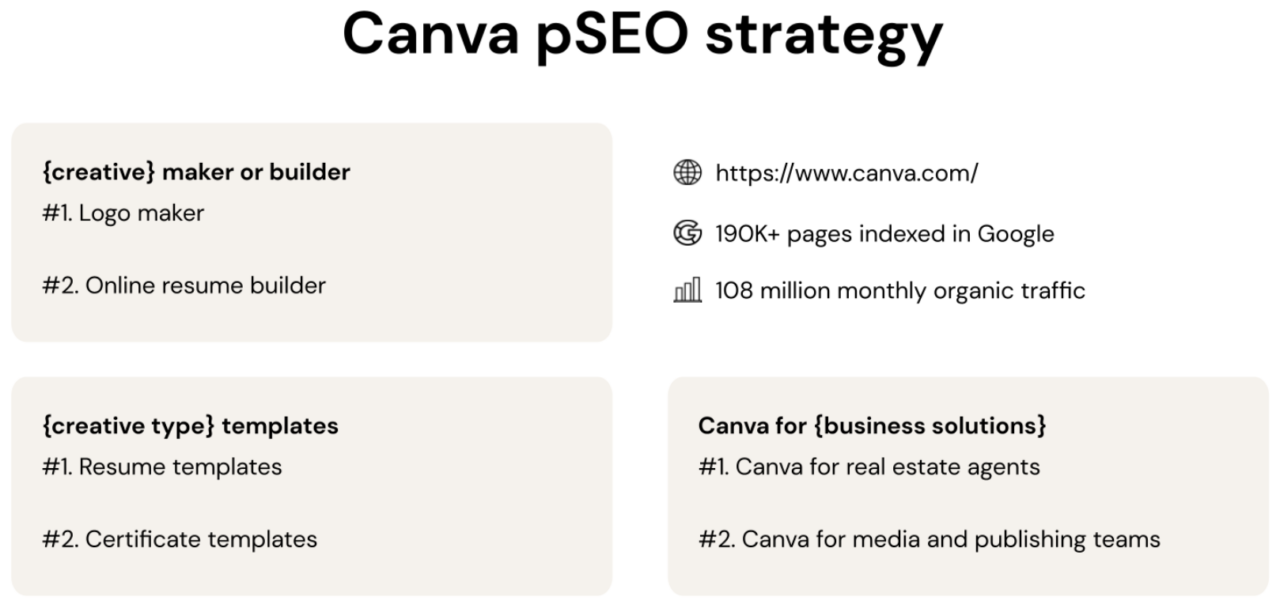
Key Takeaways:
- Strategic Inclusion of Data Points: Canva strategically includes tool names, illustrations, CTAs, template details, and business use case descriptions, ensuring a comprehensive and informative user experience.
- Enhanced User Engagement: They incorporated FAQ sections, how-to guides, and multiple filtering options based on data insights to enhance user engagement and satisfaction.
- User Intent Alignment: Canva’s success lies in aligning dynamically generated content with user search behavior, showcasing a commitment to delivering what users seek.
Challenges and Solutions in Programmatic SEO Content Creation
Programmatic SEO content creation involves using automated processes and algorithms to generate and optimize content for search engines. While it offers efficiency and scalability, there are still several challenges associated with it, including:
- Quality Concerns: Automated content may need more creativity, nuance and quality than human-generated content. To solve this issue, combine automation with human oversight. Use algorithms to generate initial content and have human editors review and refine it to make sure the quality is up to snuff.
- Content Uniqueness: Programmatic SEO content creation can result in duplicate or generic content, negatively impacting search engine rankings. Hence, you should implement algorithms that focus on creating unique and valuable content. Use techniques such as content rephrasing, data personalization and dynamic content assembly.
- Adaptability to Algorithm Changes: Search engine algorithms frequently change, and automated content creation processes may need to be updated or more effective. Hence, updating algorithms regularly to align with search engine updates is important.
- Multimedia Integration: Automated systems may focus on text-based content, overlooking the importance of multimedia elements. Solution: Integrate multimedia components such as images, videos and infographics.
- Keyword Over-Optimization: Overemphasizing keywords without considering natural language flow can lead to keyword stuffing and negatively impact SEO. You should implement keyword optimization techniques that prioritize natural language and user readability. Additionally, use semantic SEO strategies to focus on the context and meaning of content.
The Future of Programmatic SEO Pages
The future of programmatic SEO pages is expected to be shaped by several key trends and developments, driven by technological advancements, changes in user behavior, and evolving search engine algorithms.
Here are some insights into the potential future of programmatic SEO pages:
- AI-Driven Content Generation: AI technologies will play an increasingly significant role in content creation. Natural language processing (NLP) and deep learning programs will evolve to generate large-scale, contextually relevant content. This will lead to more efficient and scalable content production, allowing businesses to create diverse content that caters to specific user intents and preferences.
- Personalization at Scale: Programmatic SEO will focus on delivering highly personalized content experiences to individual users. AI-driven algorithms will analyze user data to understand preferences, behaviors, and intent, enabling dynamic content personalization. Users will encounter content tailored to their interests, resulting in increased engagement, longer on-site durations, and improved conversion rates.
- Voice Search Optimization: With the rise in voice-activated devices and virtual assistants, programmatic SEO will emphasize optimizing content for voice search queries. Natural language understanding and conversational content will be key. Websites that effectively adapt to voice search trends will experience improved visibility and traffic, especially as more users rely on voice-activated search interfaces.
- Video Content Integration: The integration of video content into programmatic SEO strategies will become more prevalent. Automated systems will generate, optimize, and promote video content to cater to the demand for visual information. Video content can enhance user engagement, dwell time, and shareability, improving search engine rankings.
- Zero-Click Searches and Featured Snippets: Programmatic SEO will need to optimize for zero-click searches, where users obtain information directly from search results, often through featured snippets. AI algorithms will need to structure content for snippet-friendly formats. Websites that appear in featured snippets stand to gain more visibility and authority, even if users don’t click through to the site.
- Hyper-Personalized SERPs: Search engine results pages will become more hyper-personalized, presenting users with results tailored to their preferences, location, and past interactions. Programmatic SEO strategies will need to adapt to these personalized SERPs by ensuring content relevance and alignment with individual user profiles.
- Mobile-First and Core Web Vitals: The mobile-first approach will continue to be crucial for programmatic SEO, focusing on Core Web Vitals such as page speed, interactivity, and visual stability. Websites that prioritize mobile optimization and meet Core Web Vitals criteria will be favored by search engines, resulting in better rankings and improved user experiences.
- Advanced Analytics and Predictive Insights: Programmatic SEO will increasingly leverage advanced analytics and predictive insights. AI algorithms will predict trends, user behavior, and emerging keywords to inform content creation strategies. SEO experts can stay ahead of the competition by proactively adapting to emerging trends and user preferences, optimizing content for what users will be searching for in the future.
Last Word on Content for Programmatic SEO Pages
Effective content creation for programmatic SEO pages requires a strategic blend of automation and human oversight. The key components, including content templates, databases, and a focus on high-quality content, form the foundation. Strategic structuring, keyword research, and optimization techniques are essential for success.
Leveraging AI tools and automation streamlines processes, but a balance with human creativity is crucial to avoid pitfalls.
Looking ahead, the future of programmatic SEO will be marked by AI-driven content generation, hyper-personalization, voice search optimization, and an increasing focus on video content. Navigating these trends while prioritizing mobile optimization and ethical AI practices will be key to staying ahead in the dynamic landscape of digital marketing.
If you’re ready to drive a significant increase in organic traffic to your website, Single Grain’s programmatic SEO experts can help (we’ve created tons of pSEO pages for our own site)!👇


